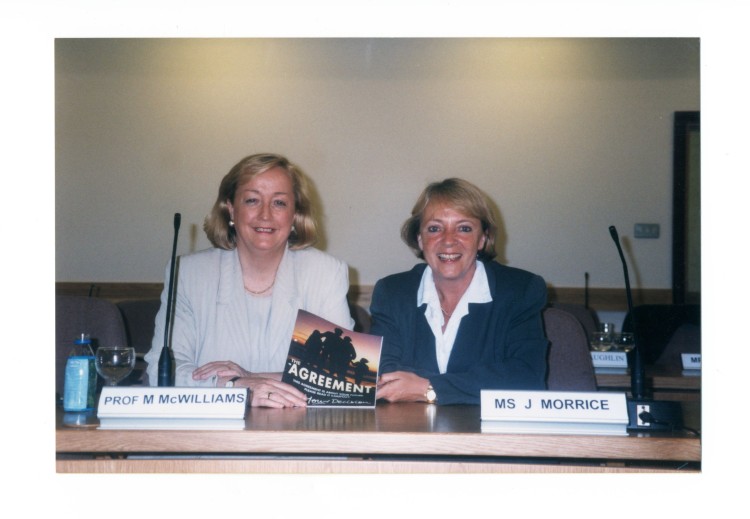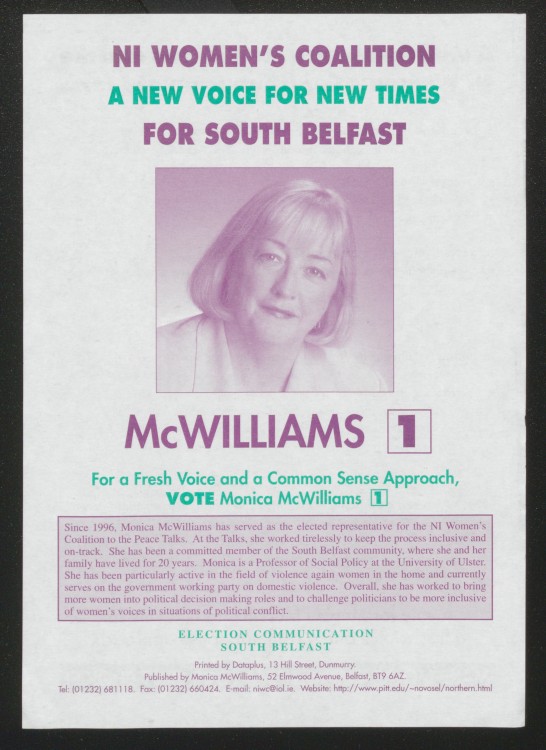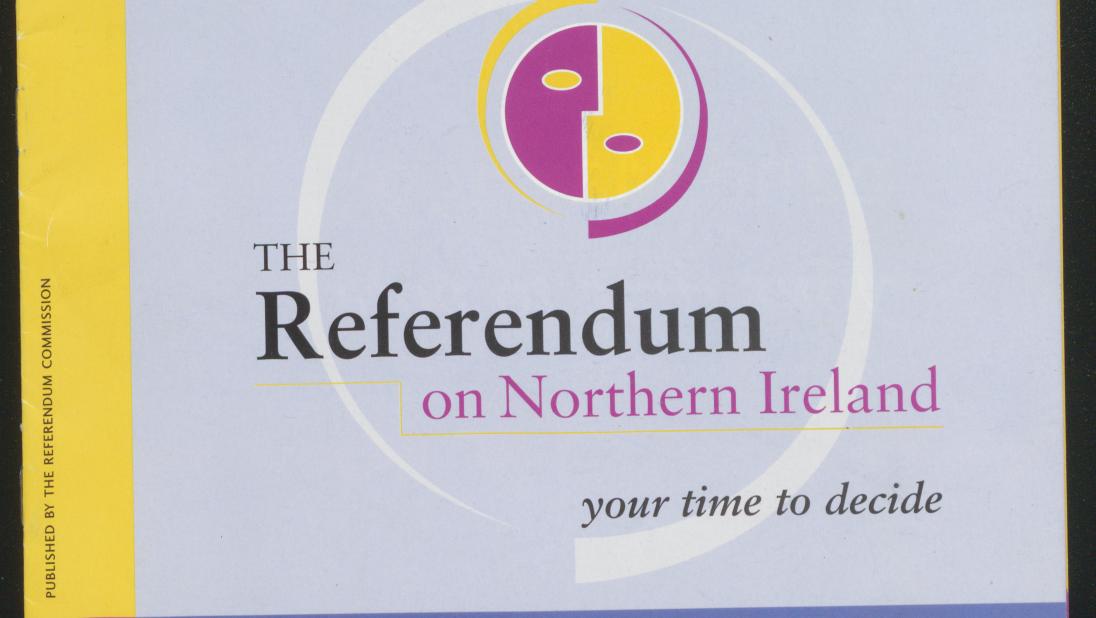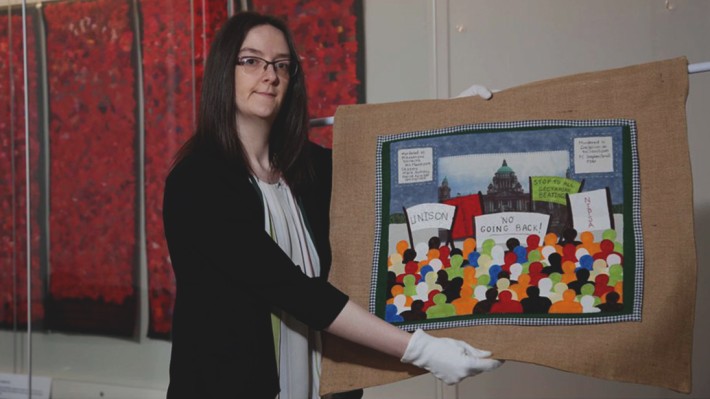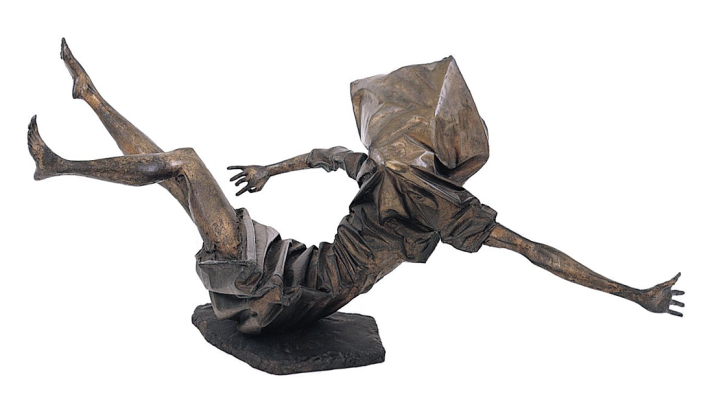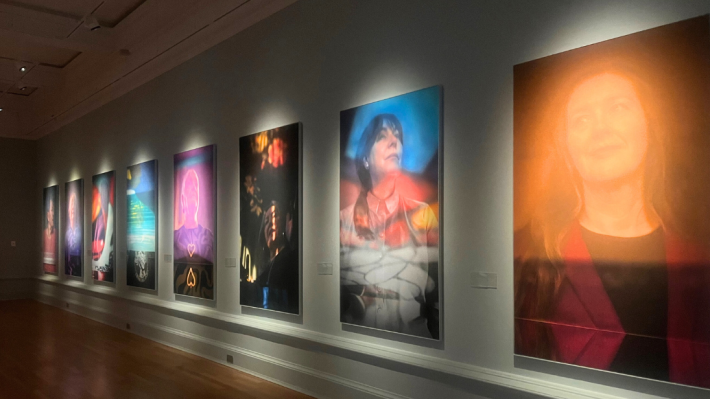
The pathway to peace and reconciliation
This month marks 25 years since the Good Friday Agreement referendum, when the Northern Irish electorate voted to approve the agreement reached in peace talks. Image credit © www.frankiequinn.com
Bringing peace to Northern Ireland
Since 1996, political representatives had been invited to multi-party talks in an effort to bring peace to Northern Ireland. Several parties left the talks after disagreements over the process of decommissioning weapons and the proposed release of political prisoners. In 1998 Senator George Mitchell, who chaired the talks as US special envoy to Northern Ireland, proposed a deadline of 9 April. Discussions continued past their original deadline, but on 10 April the Belfast Agreement was signed, consisting of a multi-party agreement signed by Northern Ireland political representatives and the British-Irish Agreement between the two governments. It is sometimes known as the Good Friday Agreement, named after the day it was signed. On 22 May 1998, a referendum was held to determine whether the public approved the proposed agreement.
Monica McWilliams and Jane Morrice were amongst the representatives at the multi-party talks from the Northern Ireland Women’s Coalition, a cross-community party formed in 1996. Here they are pictured with a copy of ‘The Agreement’ which was the document issued to every household in Northern Ireland laying out the terms and principles of the agreement. Both were elected in June 1998 to represent the party in the Northern Ireland Assembly.
The Agreement
‘The Agreement’ booklet emphasised that it was up to the people themselves to decide and vote on the future of Northern Ireland. Terms of the agreement included proposals for a power-sharing executive in Northern Ireland, prisoner releases, the decommissioning of paramilitary weapons, police reform and human rights initiatives.
On the same day as the referendum in Northern Ireland, a referendum was also held in the Republic of Ireland, which asked the people if they agreed to the state signing the agreement and to an amendment to their constitution. As part of the peace talks, Taoiseach Bertie Ahern had agreed to propose this change, amending articles to reflect the commitment in the Belfast/Good Friday Agreement that a united Ireland could only be brought about with the consent of the majority of people. In the Republic of Ireland, people received communications like the one above, which gave detailed information about these amendments.
The referendum
In the lead up to the referendum, campaigners from both sides began to distribute leaflets and organise rallies to gain support. Prominent opposition to the agreement came from the Democratic Unionist Party (DUP) whose leader Rev. Ian Paisley had been an attendee at the multi-party talks, but left over disagreements about the process for decommissioning weapons. Within the Ulster Unionist Party, leader David Trimble (who had signed the agreement) faced fierce opposition from other unionists and even some colleagues in his party who opposed the agreement. David Trimble was subsequently awarded the 1998 Nobel Peace Prize along with Social Democratic Labour Party leader John Hume. Trimble also would go on to become Northern Ireland’s first First Minister.

As part of the ‘Yes’ campaign, a concert was organised at the Waterfront Hall in Belfast in May 1998, with U2 headlining the event. Bono brought David Trimble and John Hume on stage, who showed a strong display of unity by joining hands. This image, taken by Belfast photographer Frankie Quinn, shows a campaigner at the King’s Hall, where on 22nd May the results of the vote were finally announced. Over 71% voted ‘Yes’ and the agreement was passed.

The referendums allowed people north and south of the border a say in their future, and the overwhelming majority saw the Belfast/Good Friday Agreement as a pathway to peace and reconciliation. The turnout to vote in the Good Friday Agreement referendum remains one of the highest in Northern Ireland’s voting history.
